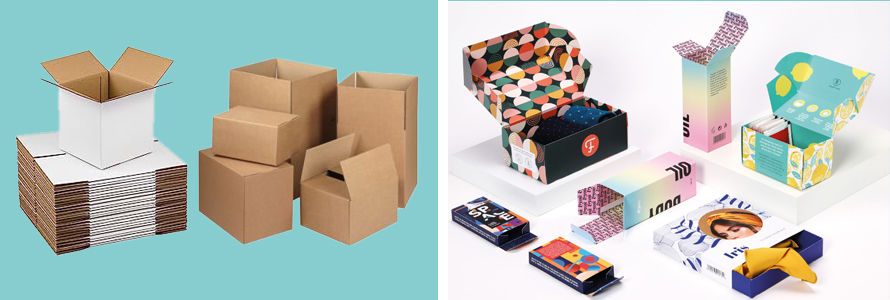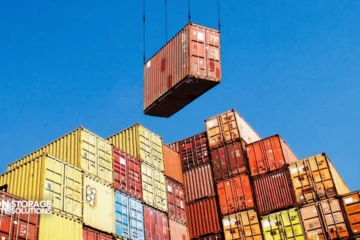When evaluating express packaging for your business, the dilemma often boils down to one critical decision—custom or standard? While both serve the same end goal—getting your product from point A to B safely—the cost implications can be drastically different depending on what you choose. But it’s not just about the price tag on the box. From material efficiency and shipping fees to branding impact and long-term savings, this is a decision that deserves a deeper dive.
Let’s break down the true cost of packaging from every angle to help you make the smartest call for your bottom line.
The Real Deal: Cost Breakdown Comparison
At first glance, standard packaging looks like the budget-friendly hero. But is it really the most cost-effective option once you factor in the bigger picture?
- Production & Setup Costs
- Standard packaging: Typically mass-produced with no setup fees, making it cheaper upfront.
- Custom packaging: Requires investment in design, prototypes, and printing plates. Yes, it’s more expensive initially, but that cost often drops as order volume increases.
- Per-Unit Pricing
- Standard: Due to economies of scale, per-unit prices stay low—even for small orders.
- Custom: Per-unit pricing decreases with larger orders, but can be steep if you’re ordering in smaller batches.
- Design & Branding Costs
- Standard: You may need to add labels or inserts to showcase branding, which can add to costs.
- Custom: Design is built-in, reducing the need for extra labeling or marketing materials.
While standard packaging wins in upfront pricing, custom options offer built-in design features that could offset other branding costs. Next, let’s see how smart material use factors in.
Material Efficiency Matters: Waste Less, Save More
Wasted materials don’t just hurt the planet—they hurt your wallet too. Efficient packaging means smarter use of resources and less money spent on things like filler, tape, and damaged returns.
- Fit-to-Product Design
- Standard: Often results in oversized boxes, requiring extra padding or void-fill materials.
- Custom: Designed to perfectly fit the product, minimizing excess material and shipping space.
- Material Type
- Standard: Uses generic, possibly less durable materials that may not suit your specific product.
- Custom: Lets you choose materials tailored for durability, weight savings, or even eco-friendliness.
- Storage & Handling Efficiency
- Standard: Bulky or mismatched sizes take up unnecessary warehouse space.
- Custom: Optimized designs make storage neater and reduce handling time.
Using only what’s necessary—and nothing more—custom packaging can help you cut down on waste and save significantly, especially if your product line has consistent sizing.
The Shipping Cost Equation: Size, Weight & Carrier Charges
Shipping costs can be the silent killer of your profit margins. Even slight inefficiencies in packaging can lead to increased dimensional weight charges, especially with express delivery services.
- Dimensional Weight Pricing (DIM)
- Carriers charge based on whichever is greater—actual weight or dimensional weight. Oversized packaging = oversized fees.
- Custom Packaging Benefits
- Tailored box dimensions keep your packages below carrier thresholds, potentially saving dollars on every single shipment.
- Lightweight materials help reduce both actual weight and shipping costs.
- Standard Packaging Shortfalls
- Boxes that are too big (even slightly) can tip you into the next price bracket.
- You may end up paying to ship air—literally.
If you’re regularly shipping via air or express services, custom packaging’s ability to reduce your shipping dimensions and weight can lead to dramatic long-term savings.
Branding & Marketing Value: Custom Packaging’s Hidden Superpower
You know what doesn’t stand out on a doorstep? A plain brown box. While standard packaging gets the job done, custom packaging opens the door to a powerful brand experience.
- Brand Recognition & Recall
- Eye-catching packaging is more likely to be shared on social media and remembered by customers.
- Reinforces brand identity from the moment your package lands in their hands.
- Customer Perception
- Premium packaging elevates perceived product value. It’s a silent salesman working 24/7.
- In competitive markets, it can be the deciding factor between you and a lookalike product.
- Marketing ROI
- Built-in design means fewer costs on promotional inserts or extra branding materials.
- Encourages repeat business by making a lasting impression on first-time buyers.
Sure, branding might seem intangible, but its impact on customer loyalty, referrals, and perceived value can significantly affect your revenue stream over time.
Playing the Long Game: Which Option Wins Over Time?
Initial costs are only one piece of the puzzle. What about the year-over-year savings and efficiencies?
- Reduced Return Costs
- Custom packaging = better protection = fewer damaged goods.
- Fewer replacements or refunds can save thousands annually.
- Operational Efficiencies
- Streamlined sizes simplify stacking, storing, and order picking.
- Time saved = labor costs saved.
- Negotiation Power
- Long-term relationships with custom packaging suppliers often lead to better pricing and service terms.
- Bulk orders of standardized custom sizes can reduce reorder complexity.
- Scalability
- Custom solutions can evolve with your brand, allowing for updates in design, material upgrades, or sustainability features without disrupting the entire supply chain.
Over time, the cumulative savings in shipping, materials, and returns often tip the scale in favor of custom packaging—especially for growing businesses or high-volume shippers.
So, Which One’s the Winner?
Choosing between custom and standard packaging isn’t just a cost decision—it’s a strategic move. If you’re working on razor-thin margins and only need short-term solutions, standard packaging might be the way to go. It’s quick, cheap, and gets the job done.
But if you’re thinking long-term—reducing waste, lowering shipping costs, enhancing your customer experience, and building a memorable brand—custom packaging could be the smarter investment. Especially in the fast-paced world of express shipping, every inch, ounce, and impression counts.
Whether you’re just starting out or scaling up, your packaging is more than a box—it’s part of your product. Treat it like it matters, and your bottom line will thank you.




